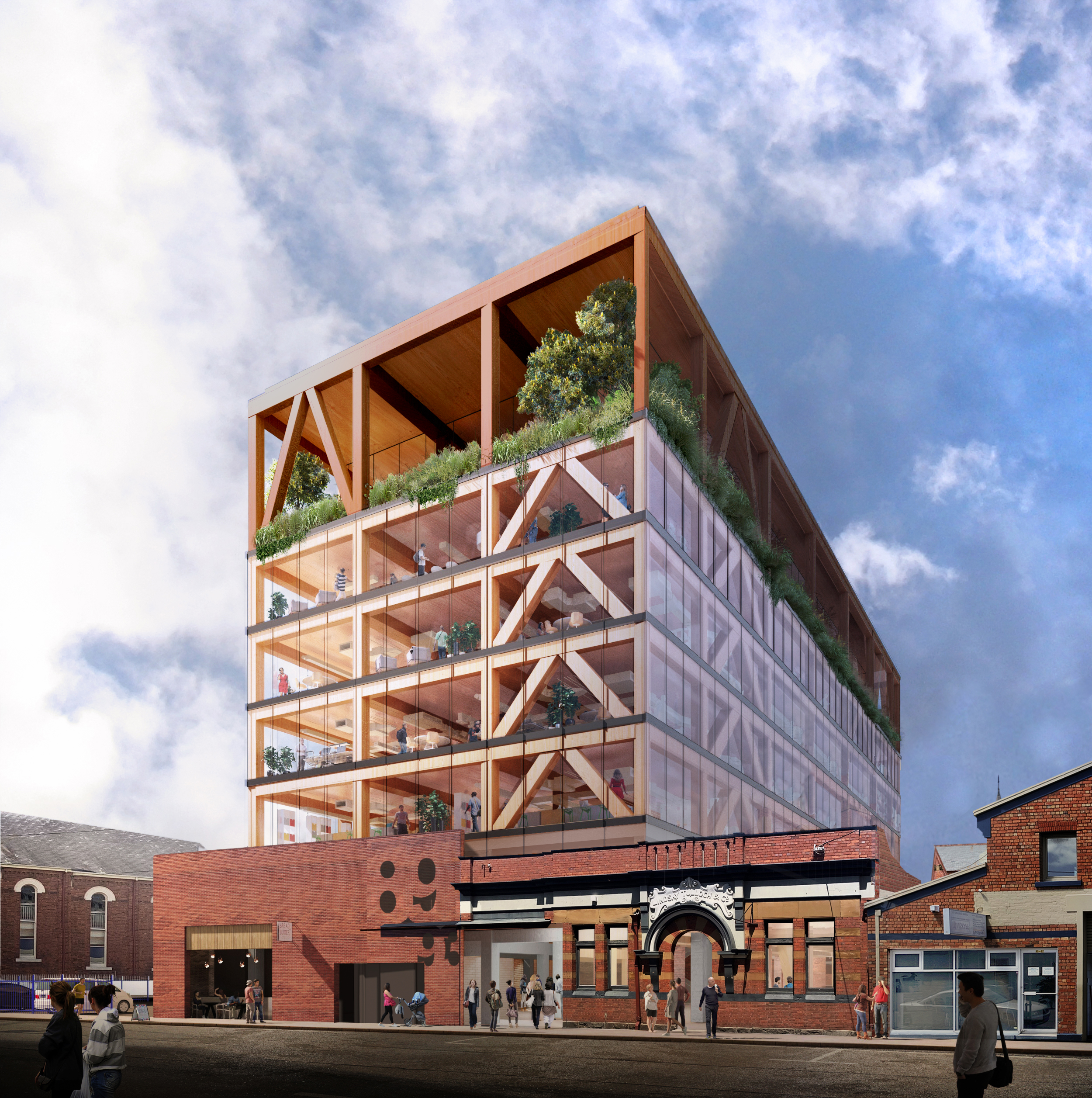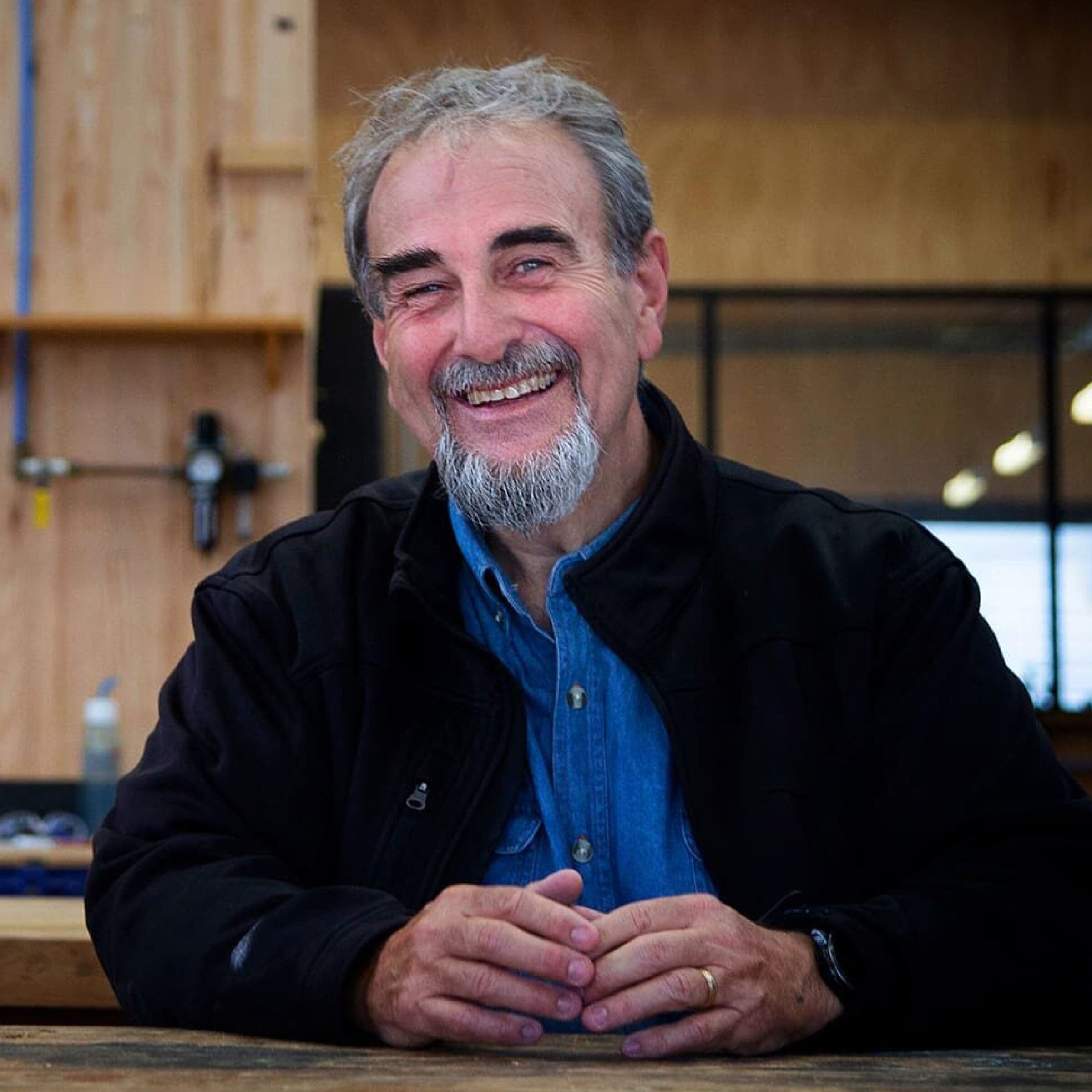Launceston’s mass timber building a glimpse into the built environment future
The new headquarters for health insurance company St Luke’s Health is a building ahead of its time. The 5,500sqm Launceston project will be the most sustainable and carbon-positive office development in Tasmania, and the targeted 40% reduction in carbon will make it one of the first Net Zero Carbon projects in Australia.
The mass timber construction method targets the removal of 7,665 tonnes of carbon from the atmosphere – the equivalent emissions of 2,141 cars driving 20,000km per year.
Artist’s impression of the Launceston mass timber building – Terroir Architects
In addition, if the building is ever demolished, the structure can be re-engineered and re-used. That’s the beauty of a mass timber build – it continuously stores carbon, and its materials can be reutilised at the end of its life.
Why is it important we shift to mass timber buildings?
Well, for one, the earth is warming. With temperatures expected to rise to 3.2°C this century, there has never been a greater sense of urgency to limit greenhouse emissions.
But just how much of a positive impact will adopting more sustainable materials, like timber, make in the built environment?
The United Nations report preferences materials like timber, bamboo and other plant fibres over the use of reinforced cement, masonry or steel frames in the construction industry. These materials can significantly reduce lifecycle greenhouse gas emissions in the production of materials and carbon storage. Building codes are being modified to recognise advances in technology to allow wider use of timber, even for taller buildings.
The inside of Launceston’s timber building. Image by Terroir Architects
Increasing the use of sustainable timber in construction has been recognised as a key method of reducing carbon emissions by the United Nations in the Emissions Gap – Report 2019.
Sustainable timber refers to timber that has been harvested responsibly, ensuring that for every tree cut down, another one is planted. It also means that there is no ecological damage to the surrounding environment.
Mass timber buildings are only as sustainable as the timber they use
Timber Design Studio’s Dayne Davis, the specialist timber engineer behind the Launceston mass timber build, says it’s all about working on projects with a long-term, generational vision. This means using sustainably sourced timbers.
“We don’t want to create an industry where there’s over forestry and deforestation,” he says.
“We want to keep natural habitats, and we want to do it in a systematic way, which will withstand the test of time – it’s as simple as that.”
This is where CLT comes in. Generally, it’s a plantation product, and when used in the built environment goes above and in terms of sequestration.
According to the Journal of Green Building, a good rule of thumb is that one cubic meter of Cross Laminated Timber (CLT) sequesters (and when used in the built environment, stores) roughly one tonne of CO2. As a comparison, around ½ a tonne of CO2 is emitted to manufacture a tonne of concrete and 2 tonnes of CO2 are emitted in the manufacture of a tonne of steel. Using timber instead of concrete and steel can provide a long-term carbon store, and avoids the carbon embedded in those materials, which is substantial.
Timber Design Studio’s Dayne Davis on Cusp CLT stairs.
Launceston’s $30 million, 28-metre-high timber building will encompass 500m2 of Cusp Eucalyptus nitens CLT, making up the mezzanine on level seven. Four of the building’s eight floors are European Spruce CLT. The glulam beams and columns throughout are also made from European Spruce.
The St Lukes Launceston timber build is set to be completed by the end of 2023.
Original Thinkers Podcast
Listen to our conversation with Scott Balmforth from Terroir, the architects behind the St Luke’s Health building:

















